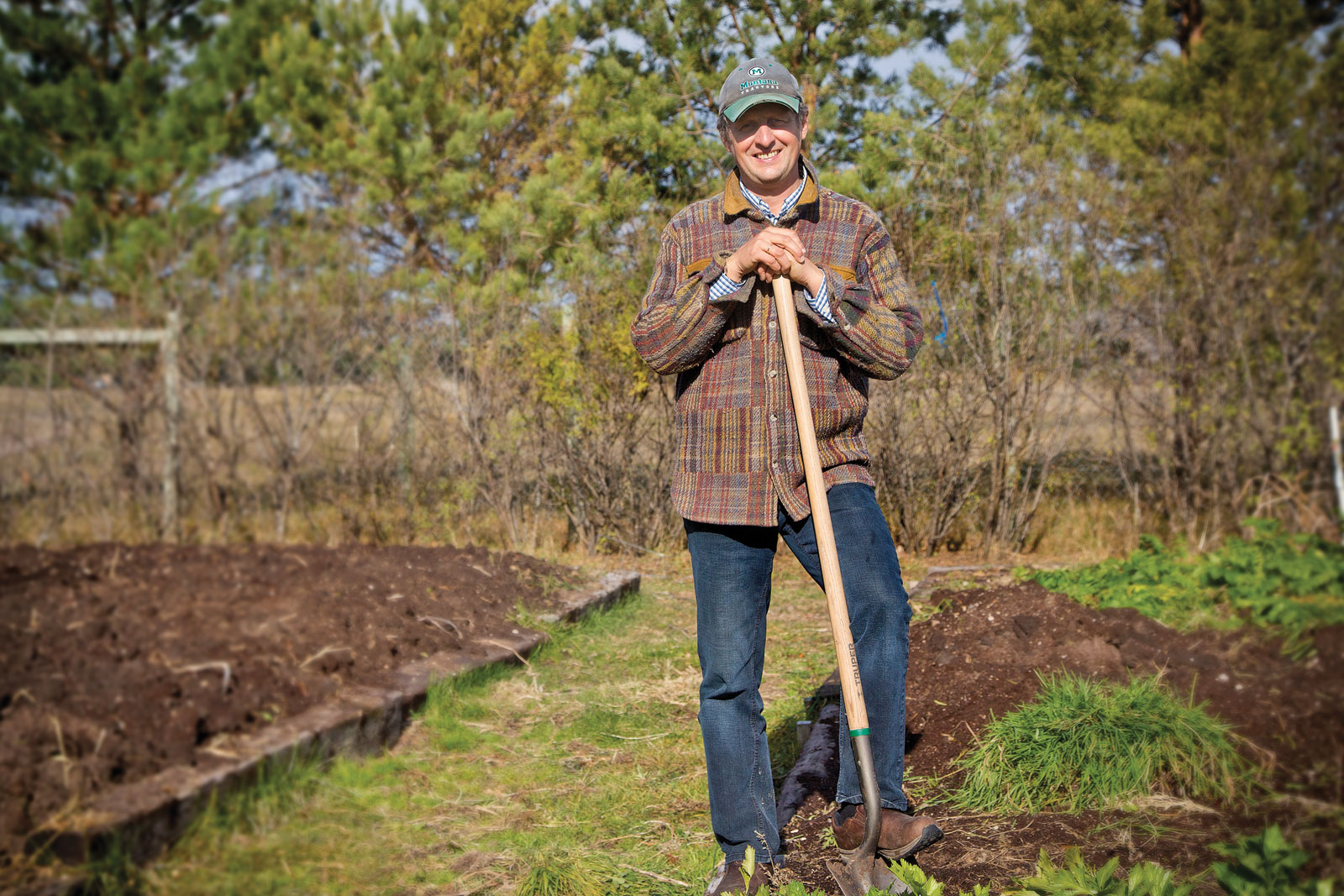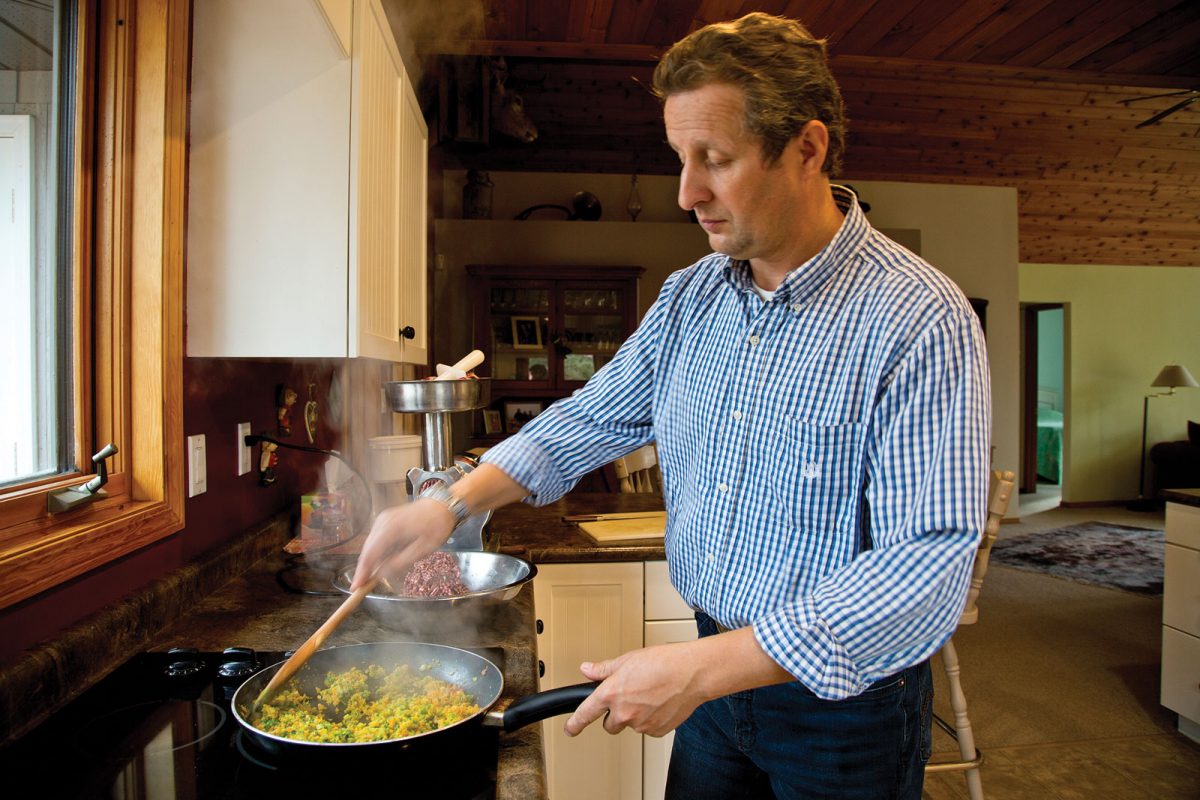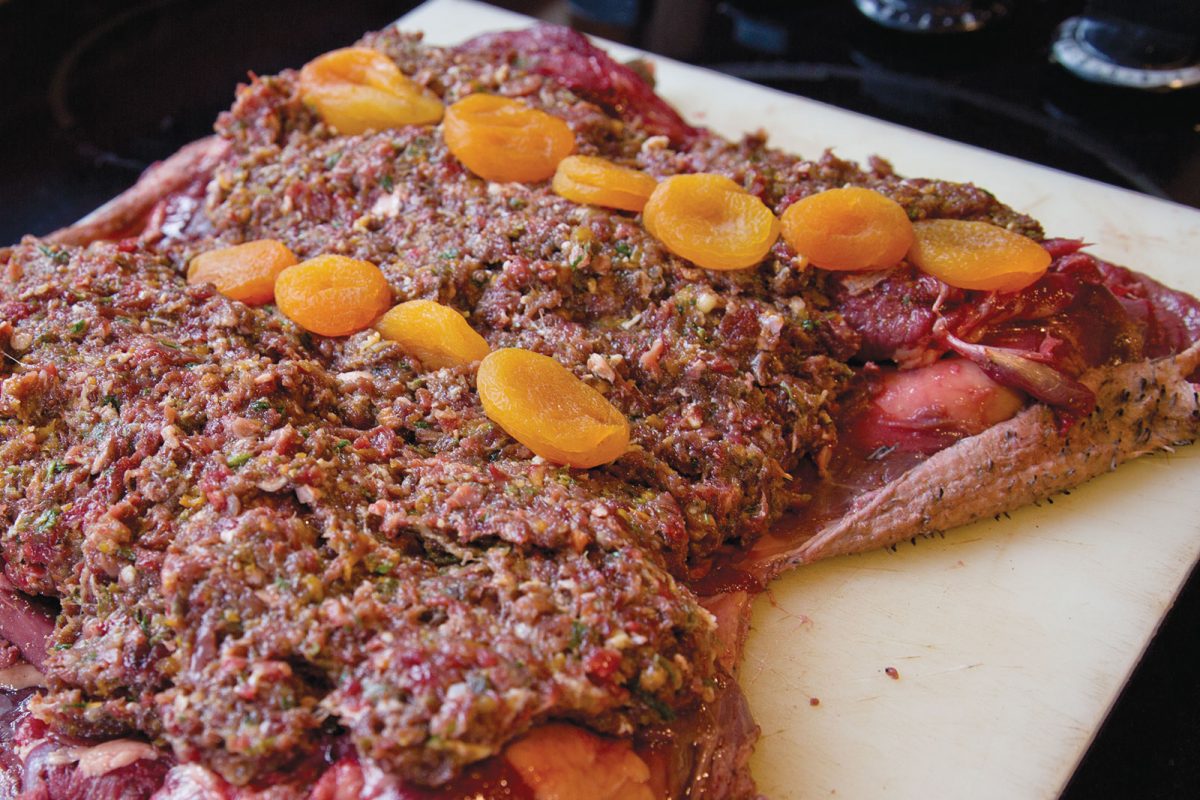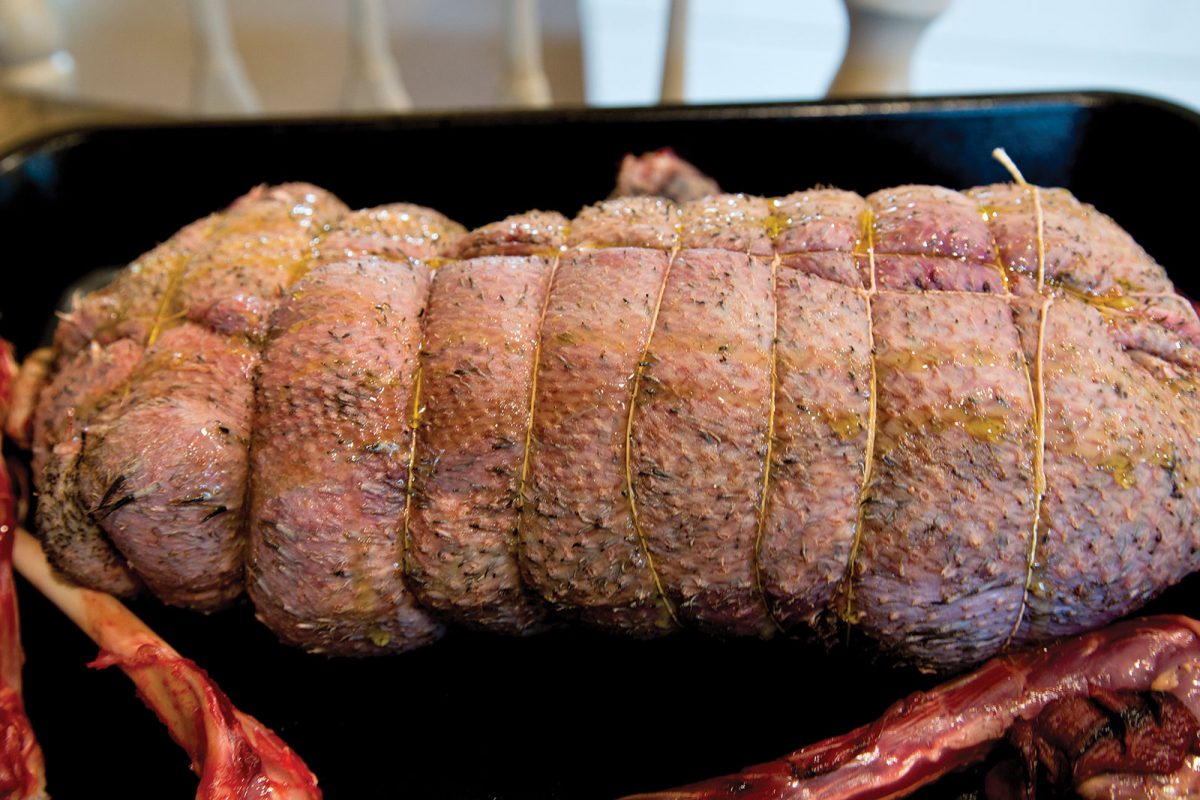Small portions
French chef Jean-Marc Picyk knows how to savour food. It took him more time to learn how to savour life.

By Julielee Stitt
“Do you know why chefs serve small portions at a fine restaurant?” asks Jean-Marc Picyk. “Because then if you have less on your plate you will take way more time to chew and enjoy it. Only then can you really taste the fine flavour of this beautiful food.”
Jean-Marc grew up in Alsace, a region in northeastern France located on the west bank of the Rhine River. For years, he worked there as a successful chef and entrepreneur.
He would wake up in the early morning to begin preparing the meal he’d serve to guests later that night. Twenty-hour work days weren’t unusual.
But people weren’t pausing to savour his dishes. “That’s an insult to me,” says Jean-Marc. Soon, he says, the long hours and limited rewards took their toll.
“How many people actually notice when the new leaves are coming on the tree? Most people are just running. And I’m not convinced they have a life. And I was that way too. I was never happy…I was burned up.”
The final push to change his life came the day of his father’s funeral. “My father told me when I was growing up that he couldn’t give us money,” says Jean-Marc. “But he’d give us something better. Courage and perseverance.”
With those two gifts in hand, Jean-Marc and his family moved to Canada, a country that’s captured his imagination since he was a young man. “I can’t explain to you why I was so attracted to life in Canada,” he says. “But you know what, there must be a reason.”
In 2008, Jean-Marc, his wife, and two of their three sons settled in Oakbank, Man., a rural community located 30 kilometres northeast of Winnipeg. Over the past nine years, the family has transformed a 33-acre (13-hectare) parcel of land into a small hobby farm, complete with chickens, rabbits, dogs, ducks, horses, one aggressive turkey and a large garden.
The family consumes food they grow, raise or hunt themselves, with a few exceptions: wine, Himalayan pink salt and olive oil.
This life is a welcome change of pace from Jean-Marc’s many years spent in the upscale kitchens of France. “Right now, I’m just happy with what I have. If I can pay my hydro bills, property taxes, and my family is happy—that’s good enough for me,” he says.
He hasn’t given up his passion. Now, he cooks for friends, family, and on a mid-October morning, this writer.
When I arrive at his home, Jean-Marc welcomes me into his family’s kitchen. It’s an average-sized room, with a corner pantry, and windows that let in the weak fall sunshine. It’s nice. Cozy. Not the space where you’d expect a chef to prepare fine food. “This is my Barbie kitchen,” says Jean-Marc, with a laugh.
As we chat, my host gets to work preparing the Canada goose that his son, Yves, harvested during a DUC mentored hunt. It was at this hunt where I first met Jean-Marc. “It was a wonderful weekend,” he recalls.
Throughout that weekend, Jean-Marc spoke passionately with me about the merits of growing and preparing your own food. For Jean-Marc, these activities can be as relaxed or as time-consuming as you make it. “If there’s a bit of weeds (in your garden), who cares,” he says.
He picks up the thread of our chat again, as he expertly debones the goose.
“What I’m doing here today, takes time. But it doesn’t have to,” says Jean-Marc. Finished deboning, he lays the bird flat, and lines it with a stuffing he’s prepared with herbs and gizzards. He adds organic apricots for flavour and colour, then ties the goose together with butcher knots. “Cooking good food can be as simple or as hard as you want it to be.”
In a final step, he places the bird in a cooking pan, and drizzles a tablespoon of olive oil on top. He slides it into the oven.
“You don’t have to make yourself sick trying to only eat organic or the best food, but think about what you’re eating.”
Pause. Consider. Savour.
With the bird in the oven, the chef checks his watch. He decides he has time to complete some chores outside while the goose cooks.
He visits the chicken coop to collect eggs, and checks his garden to decide what items he’ll harvest next.
“It’s amazing what Mother Nature gives back,” he says.
Back inside his now-aromatic kitchen, he removes the goose from the oven, and cuts into it. The apricots provide a warm splash of colour against the dark meat. He places the goose on plates and drizzles it with jus. As a side, he serves an assortment of root vegetables his wife prepared the night before.
“Now we must eat.” Pouring me a glass of wine, Jean-Marc says, “Let me tell you something. When you eat, all your senses are at work. Delicious food is beautifully pre-
sented. It smells good. And it tastes good.”
After my first bite, I would have to agree.
As we sit as his table and eat, it’s clear that this once work-obsessed chef has made peace with the fact that he won’t change the way the world consumes food. Today, Jean-Marc is happy. He’s learned how to enjoy life. He gardens, hunts, and extols the benefits of home cooking with anyone who will listen.
“You have to be grateful for what you get every day,” he says.
And while he still struggles to pinpoint what drew him to Canada, it emerges, here. In a rural Manitoba community, Jean-Marc has found a fresh start and a new outlook. He’s discovered the beauty of small portions.

From the chef’s kitchen
French chef Jean-Marc Picyk prepares a stuffed goose full of flavour
In this recipe, Jean-Marc turns a goose his son harvested during a DUC mentored hunt into a meal that
will entice the pickiest of eaters and impress the foodies in your life.
Stuffed Wild Goose
Prep time: Approximately 90 minutes
Cook time: Varies depending on the size of the bird. For smaller birds (three to five pounds), 60 minutes. Larger birds (six to eight pounds) will require longer cook times.
Ingredients
1 goose
2 carrots
1 onion
2 cloves of garlic
1 small bunch of parsley
60 ml (1/4 cup) uncooked bacon
30 ml (2 tbsp) of olive oil
Herbes de Provence
pepper
10-12 dried apricots
Goose
- Pluck bird.
- Remove the gizzards. Set them in a bowl to the side.
- Using a sharp knife, debone the bird. Set the carcass to the side.

©DUC
Filling
- Using a food processor or grinder, chop carrots, onion, garlic and parsley into very fine pieces.
- In a lightly oiled pan, sauté the vegetables until tender. Remove from heat and allow to cool.
- Take the gizzards set aside and run them through a meat grinder. (If you don’t own a meat grinder, a food processor can also work in a pinch. To grind meat in a processor, cut the meat into 2.5 cm (1 inch) cubes. Place the cubes on a tray, taking care pieces don’t touch. Place the tray in the freezer for approximately 20 minutes. Once the cubes are frozen, remove the tray and in small batches, run the meat through your food processor.)
- Grind the bacon and add it to the ground gizzards.
- Combine sautéed vegetables with the ground gizzard and bacon mixture. Combine well.
- Lightly season with pepper and herbes de Provence.

The deboned goose is lined with the filling, and apricots added for a splash of colour and flavour.
©DUC
Assembly
- Lay the bird open on a flat surface. Using a paper towel, dab to remove any fluid.
- Spread the gizzard filling in the bird. It should be approximately 2.5 cm (1 inch) thick. (Use any remaining filling for meatloaf. Simply place the leftover meat in a lightly oiled baking pan, and top with a few bay leaves and one to two cloves.)
- With the goose still open, place approximately five apricots down either side of the bird.
- Fold the bird back together, lengthwise.
- Using a large needle and natural fibre thread (cotton or hemp), sew the bird back together.
- Using butcher’s thread, tie butcher knots (also known as slip knots) along the length of the goose.

©DUC
Place the stuffed bird in a cooking pan. Drizzle with approximately 30 ml (2 tbsp) of olive oil and cook. Place the carcass in the pan. This will create the jus. “Jus” is a French culinary term. It refers to the juices released by the meat as it cooks.
Cook at 204°C (400°F) for approximately 60 minutes. Depending on the size of the bird, it may take longer. “The inside of the goose should be around 78°C (175°F),” advises Jean-Marc.
Once the goose is cooked, turn off the oven and allow it to sit for 20 minutes. “This tenderizes the meat.” Then, remove the goose from the oven. Place on a cutting board and slice. Spoon a small amount of jus from the bottom of the baking pan onto the slice of stuffed goose. Enjoy.



